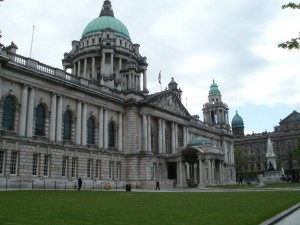A report has been published with the final recommendations for the make-up of local councils with enhanced powers in Northern Ireland.
The 26 councils areas will be replaced by 11 in a major reorganisation which is expected to lead to many long-serving councillors retiring.
There will be 120 fewer public representatives after the shake-up but the new authorities will assume responsibility for local planning, housing repairs and demolition.
A report has been submitted to Northern Ireland Secretary Theresa Villiers setting out proposals for the new councils’ building blocks, known as district electoral areas. Elections are due in May.
District electoral areas commissioner Dick Mackenzie said: “My recommendations reflect many of the representations I received from the public during an extensive consultation process which involved public inquiries in nine of the new council areas.
“My recommendations represent a considerable change from the current pattern in some places due to the reduction in the number of councils and the consequent fall in the number of wards.
“However, in other areas there is a broad similarity with the existing pattern.”
The new local government districts contain 462 wards. Each ward represents a seat on the council.
Councillors will be mandated to represent the district electoral area by a system of proportional representation.
Mr Mackenzie’s recommendations comprise 34 district electoral areas containing five wards; 30 six-ward areas; and 16 seven-ward areas .
The greatest changes in council make-up are in the Causeway Coast and Glens council area, Armagh, Banbridge and Craigavon, Mid and East Antrim and Mid Ulster. Fermanagh and Omagh are virtually unchanged.
Mr Mackenzie also proposed a change in how future reviews of councils are carried out.
“A review should be instigated in relation to the processes pertaining to local government boundaries and district electoral areas with a view to their being carried out simultaneously and under one authority – rather than, as at present, where the Department of the Environment has responsibility for local government boundaries while the Northern Ireland Office has responsibility for electoral area boundaries,” he said.
His report will form the basis for legislation at Westminster in the new year.




